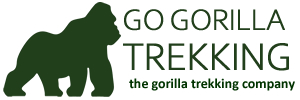Volcanoes National Park (Parc National des Volcans/Virunga Volcanoes) consists of 13,000 hectares of protected land in Rwanda. The Volcanoes National Park joins, Mgahinga National Park and Virunga National Park to protect the conservation areas in Uganda, Rwanda and DRC. These parks are all managed separately, however before 1960, the Volcanoes National Park and Virunga National Park were one protected area known as Albert National Park.
Ranging from 2,400 – 4,507 metres in altitude, Parc National des Volcans consists of 6 extinct volcanic peaks including Muhavura, Mt Gahinga, Karisimbi, Visoke, Mikeno Aand Sabyinyo; these dramatic peaks form the backdrop to your gorillas tracking safaris as you track some of the last remaining mountain gorillas in the verdant foothills.
The Volcanoes National Park (PNV) is renowned for historically being the home to the renowned scientist, Dian Fossey. This is where pioneering studies were undertaken to evaluate and study the behaviour of mountain gorillas in their natural habitat; prior to this people had literally thought that they were angry and agreessive wild beasts but it was through Fossey’s work that we now understandthe peace and tranquility that envelopes mountain gorillas lives. It is largely thanks to Fossey that we still have gorillas in our world today and for this reason, and many others, we should continue to protect them.
Gorilla Safaris in Rwanda concentrate only on the Parc National des Volcans. This is where approximately 300-320 mountain gorillas live across the mountainous region of Rwanda, Uganda and DRC. Aside from tracking mountain gorillas there are also a variety of other activities possible in Parc National des Volcans including tracking the golden monkeys, climbing one of the Virunga Volcanoes or visiting the remains of the Dian Fossey Research Centre, her grave and the graves of the gorillas with which she worked.
Habituated Gorilla Tracking Groups
There are now 7 habituated gorilla groups in Parc National des Volcans in Rwanda with 8 perits available for each group giving a maximum of 56 permits available each day. At first glance this may seem like a lot of permits however they book up a long way in advance meaning that interested parties must book at least 6 – 12 months in advance in order to guarantee preferred dates of travel and accommodation. Each permit costs UD$500 per person per tracking. At World Primate Safaris, we recommend at least two gorilla permits per person in order to fully appreciate this once in a lifteim experience. To date Go Gorilla Trekking has a 100% success rate for tracking the gorillas in both Uganda and Rwanda!
Gorilla Tracking Safaris are slightly easier in Rwanda than in Uganda. The terrain is slightly less steep and has slightly less dense vegetation often making for better photographic opportunities. Potential clients wishing to track the gorillas should bear in mind that tracking can still take between two and eight hours.
The main habituated gorilla groups that are available for tracking are as follows:
Susa Gorilla Group – this is probabaly the most difficult gorilla group to track as it is often frequenting the higher regions of the foothills, however this is also one of the most spectacular with a total of 38 individuals! Sitting amongst this family is a thrilling experience as you are welcomed into the family for the one hour time limit that you are permitted.
Sabyinyo Gorilla Group – this gorilla group is slightly easier as its principal territory lies in the depression between the peaks of Mt Gahinga and Mt Sabyinyo. The slopes to track these gorillas are often not as daunting as the Susa Group and the eight individuals (consisting of 2 silverbacks) is still a sight to behold.
Group Thirteen – a group of twenty-one gorillas in a similar location to that of the Sabyinyo Group but occasionally roaming between Rwanda, Congo and Uganda. Group Thirteen has one of the most relaxed silverbacks of all the groups.
Amahoro Group – 17 individuals that are normally found on the slopes of Mt Visoke; this is moderate in difficulty and provides an excellent gorilla tracking experience.
Umubano Group – consisting of 9 individuals that used to be part of the Amahoro Group and then a maturing silverback split off with some females.
Kwitonda Group – 16 individuals, the Kwitonda Group used to inhabit the Congolese side of the Virunga Volcanoes, however in recent years has permanently settled in the Rwandan side of the park. It is thought that this group has moved as Rwanda’s park is more stable and has less human incursions into the gorilla’s habitat.
Hirwa Group – a young group forming in 2006/7 from members of both Group 13 and the Sabyinyo group. As it is a young group one would expect it to not be quite as prevalent however Hirwa Group manages to hold its own and has been joined by other individuals over the last couple of years.
Aside from the groups mentioned above, there are in fact also four other habituated gorillas groups however these are used for research purposes only. These gorilla groups include Beetsme, Pablo, Shinda and Bwenge.
Gorilla Safari Rules and Safety
The minimum age to be able to track the gorillas is 15. Clients are also not permitted to track the gorillas if they are ill even with a common cold; thes reasons for this being that illnesses pass very easily between humans and gorillas and this can wipe out an entire gorilla family in a matter of days.
When tracking the gorillas there is also a strict proximity limit of 7 metres in order to ensure both safety of clients and also the gorillas themselves…but believe me, being that close to a 180KG silverback is close enough!
